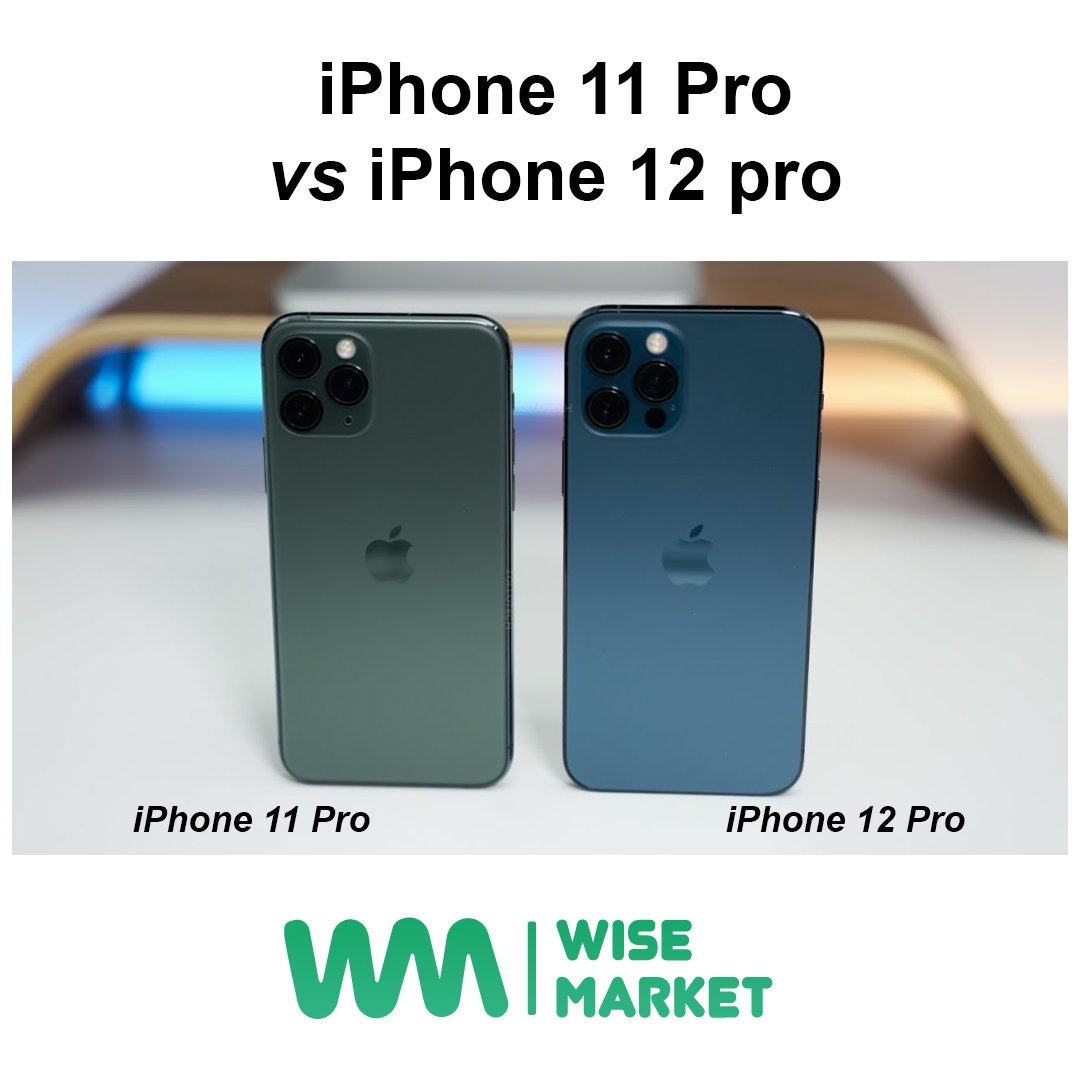Both the iPhone 11 Pro and the newly buy iPhone 12 Pro are excellent devices with great features. However, the iPhone 12 Pro has some notable improvements over the iPhone 11 Pro, including:
Read More: Single Registration Number Services
Design
In contrast to the rounded form of the iPhone 11 Pro, the iPhone 12 Pro has a new flat-edged design that many people perceive to be more fashionable and contemporary.
Display
Compared to the iPhone 11 Pro, the Super Retina XDR display of the iPhone 12 Pro is brighter and has a greater resolution. Compared to the iPhone 11 Pro, the iPhone 12 Pro has a bigger, higher-resolution display. The resolution of the 5.8-inch Super Retina XDR display on the iPhone 11 Pro is 2436 x 1125 pixels, while the 6.1-inch Super Retina XDR display on the iPhone 12 Pro has a resolution of 2532 x 1170 pixels.
The iPhone 12 Pro is bigger, has a better resolution, and has a peak brightness of 1200 nits as opposed to the iPhone 11 Pro’s 800 nits. This indicates that high dynamic range (HDR) material, including as images and videos, may be shown on the iPhone 12 Pro with brighter and more vibrant colors.
Both displays have great color accuracy, contrast, and viewing angles and employ OLED technology. But, the iPhone 12 Pro’s display is better suited for activities like video playing, web surfing, and productivity due to its greater quality and bigger size.
5G connectivity
The iPhone 12 Pro has 5G connectivity, which means it can take advantage of faster network speeds compared to the iPhone 11 Pro.
Processor
Compared to the iPhone 11 Pro, the iPhone 12 Pro has a more sophisticated and potent processor. Apple’s A13 Bionic processor powers the iPhone 11 Pro, while Apple’s A14 Bionic chip powers the iPhone 12 Pro.
The A14 Bionic chip uses a 5-nanometer manufacturing technique, which makes it quicker and more power-efficient than the A13 Bionic chip, which uses a 7-nanometer manufacturing process. In comparison to the 6-core CPU and 4-core GPU in the A13 chip, the 6-core CPU and 4-core GPU in the A14 chip is quicker and more effective.
In addition, the A14 Bionic processor has a new 16-core Neural Engine that offers up to 80% quicker machine learning performance than the A13 Bionic chip. This makes the iPhone 12 Pro quicker and more effective in activities like computational photography, augmented reality, and Siri speech recognition.
Overall, the A14 Bionic processor in the iPhone 12 Pro is more powerful and sophisticated than the A13 Bionic chip in the iPhone 11 Pro, resulting in speedier performance and more effectiveness.
Camera
Compared to the iPhone 11 Pro, the iPhone 12 Pro has a better camera system. Both phones feature triple-lens camera systems, but the iPhone 12 Pro comes with a number of improvements that make it perform better.
Three 12-megapixel lenses—one 12-megapixel ultra-wide, one 12-megapixel wide, and one 12-megapixel telephoto—are included in the iPhone 12 Pro. It also has a LiDAR scanner, which measures depth with lasers and is useful for augmented reality (AR), low-light photography, and focusing.
The iPhone 12 Pro’s wide and ultra-wide lenses have bigger sensors and pixels, allowing them to collect more light and perform better in low light. With a 2x optical and 10x digital zoom capability, the telephoto lens also provides better zoom performance.
The new ProRAW picture format, which combines the adaptability of RAW data with Apple’s image processing technologies, is also available on the iPhone 12 Pro. This makes it possible for photographers to take higher-quality photos and edit them more precisely.
Overall, the iPhone 12 Pro’s camera system is more sophisticated and provides superior low-light performance, higher zoom capabilities, and the inclusion of LiDAR technology, which may boost AR and focusing applications.
- Pro 12MP camera system: Ultra Wide, Wide, and Telephoto cameras
- Ultra Wide: ƒ/2.4 aperture and 120° field of view
- Wide: ƒ/1.6 aperture
- Telephoto: ƒ/2.0 aperture
- 2x optical zoom in, 2x optical zoom out; 4x optical zoom range
- Digital zoom up to 10x
- Night mode portraits enabled by LiDAR Scanner
- Portrait mode with advanced bokeh and Depth Control
- Portrait Lighting with six effects (Natural, Studio, Contour, Stage, Stage Mono, High‑Key Mono)
- Dual optical image stabilization (Wide and Telephoto)
- Five-element lens (Ultra Wide); six‑element lens (Telephoto); seven-element lens (Wide)
- Brighter True Tone flash with Slow Sync
- Panorama (up to 63MP)
- Sapphire crystal lens cover
- 100% Focus Pixels (Wide)
- Night mode (Ultra Wide, Wide)
- Deep Fusion (Ultra Wide, Wide, Telephoto)
- Smart HDR 3
- Apple ProRAW
- Wide color capture for photos and Live Photos
- Lens correction (Ultra Wide)
- Advanced red-eye correction
- Photo geotagging
- Auto image stabilization
- Burst mode
- Image formats captured: HEIF and JPEG
Conclusion
Overall, the iPhone 12 Pro is a more advanced device than the iPhone 11 Pro, but whether it is “better” for you will depend on your individual needs and preferences. If you wish to buy a used iPhone 11 Pro and used iPhone 12 Pro then we would suggest buying it from Wise Market Pakistan. They have the best used iPhones than other vendors with a 13-Month Warranty.
This post is published on recifest


